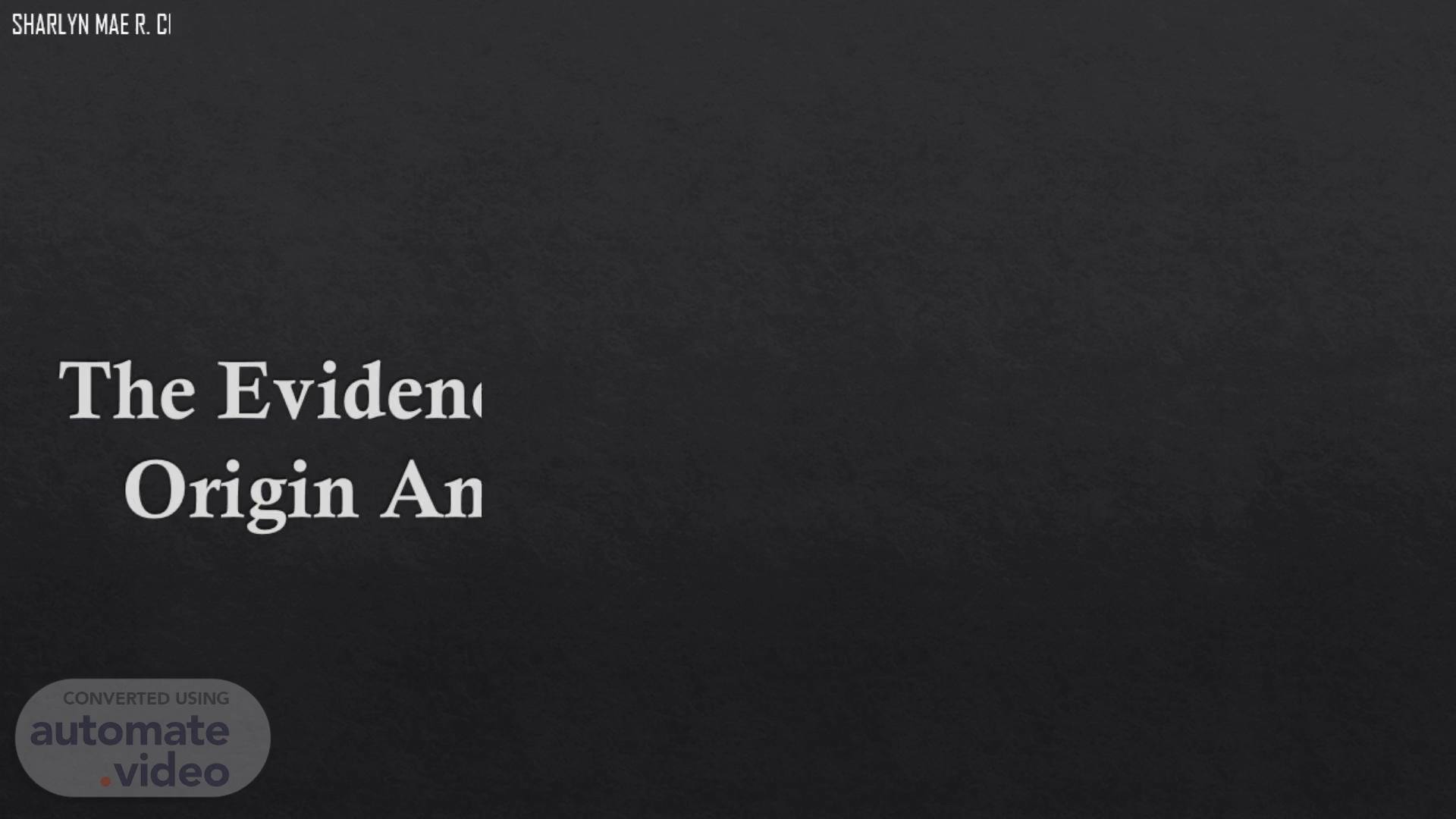
The Evidence For Evolution And The Origin And Extinction Of Species
Scene 1 (0s)
The Evidence For Evolution And The Origin And Extinction Of Species.
Scene 2 (10s)
LESSON OBJECTIVES. Explain how populations of organisms have changed and continue to change over time showing patterns of descent with modification from common ancestors to produce the organismal diversity observed today Describe how the present system of classification of organisms is based on evolutionary relationships.
Scene 3 (24s)
“Why do you think there are so many different species of plants and animals around the world?”.
Scene 4 (33s)
Different breeds, but same ancestor (wolf).. Chihuahua (Smooth Coat) Dog Breed Information | Purina.
Scene 5 (45s)
Geologic Time Scale. Precambrian (540 million years ago): Earliest life (bacteria, algae). Paleozoic Era (541–252 mya): First fish, amphibians, reptiles. Mesozoic Era (252–66 mya): “Age of Reptiles” – dinosaurs, first birds, early mammals. Cenozoic Era (66 mya–present): “Age of Mammals” – diversification of mammals, birds, flowering plants; humans..
Scene 6 (1m 3s)
What is Evolution?. The change in the heritable characteristics of biological populations over successive generations. Charles Darwin called this process "Descent with Modification.".
Scene 7 (1m 14s)
For Example:.
Scene 8 (1m 20s)
Lf.VV.
Scene 9 (1m 26s)
Descent with Modification. All species, living and extinct, are related. They have descended from common ancestors over vast stretches of time. As species descend from common ancestors, they accumulate adaptations, or modifications, that make them suited to their specific environments..
Scene 10 (1m 41s)
Common descent - CreationWiki, the encyclopedia of creation science.
Scene 11 (1m 48s)
The Engine of Change: Natural Selection. 1. Genetic Variation: Individuals in a population have different, heritable traits (e.g., color, size). 2. Overproduction: More offspring are born than can possibly survive. 3. Struggle for Existence: Competition for resources (food, water, mates). 4. Differential Survival & Reproduction: Individuals with advantageous traits for their environment are more likely to survive and reproduce. (Prey and Predator) 5. Inheritance: The advantageous traits are passed on, becoming more common in the population over time..
Scene 12 (2m 14s)
Evidence of Common Ancestry: Homologous Structures.
Scene 13 (2m 26s)
Evidence of Common Ancestry: The Fossil Record. Fossils provide a historical record of life on Earth. They show a progression of life from simpler organisms in older rock layers to more complex organisms in newer layers..
Scene 14 (2m 39s)
Equine Evolution, Teeth and Digestion - Missy's Bucket.
Scene 15 (2m 46s)
A 30-year study of 'Darwin's finches' reveals the 'genetic architecture' of evolutionary change.
Scene 16 (2m 54s)
Classification Based on Evolutionary Relationships.
Scene 17 (3m 10s)
Classification Based on Evolutionary Relationships.
Scene 18 (3m 21s)
Cladograms | PPTX | Biological Sciences | Science.
Scene 19 (3m 36s)
A phylogenetic tree is a branching diagram that visually represents the evolutionary relationships among a group of organisms. The "tree" shows how species, populations, or other taxonomic units are thought to have evolved from common ancestors over time. This makes it an essential tool for the modern classification of life..
Scene 20 (3m 55s)
Learning Takeaways:. Populations, not individuals, evolve. Natural selection is the mechanism that drives evolution. Descent with modification explains how all life is related through common ancestors. Evidence from homologous structures and the fossil record supports common ancestry. Diversification from a common ancestor leads to the incredible biodiversity we see today..